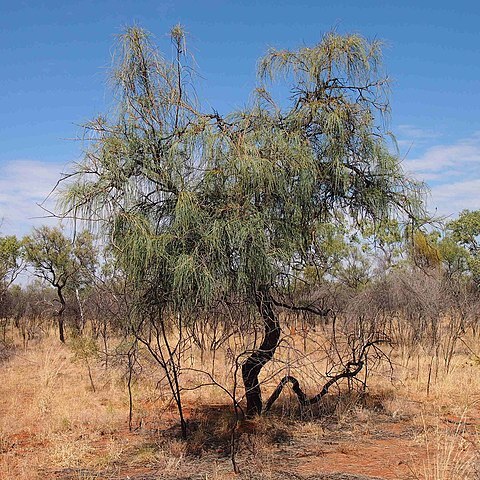A tall shrub or small tree. It grows 4-8 m high and spreads 2-4 m wide. The crown is open and sparse. The bark is dark grey and furrowed. The branches are twisted. The leaves are 15-35 cm long by 0.3 cm wide. They are crowded and hang down. The flower racemes are 8-16 cm long. They hang down or arch over. They grow from old wood. The flowers are 0.8-1 cm long and are greenish yellow but turn orange. The fruit are 3-3.5 cm long by 1-1.5 cm wide. They taper to a curved beak. The flowers are rich in nectar.


